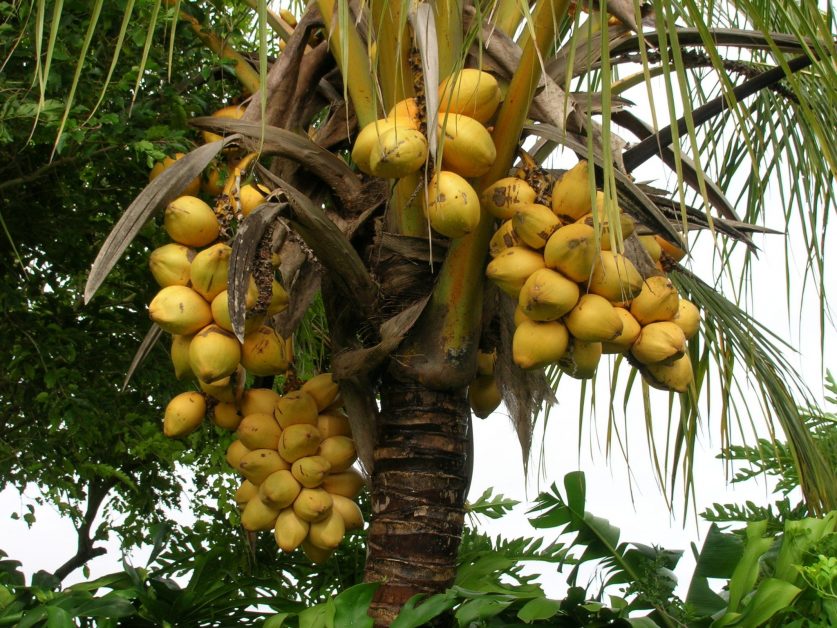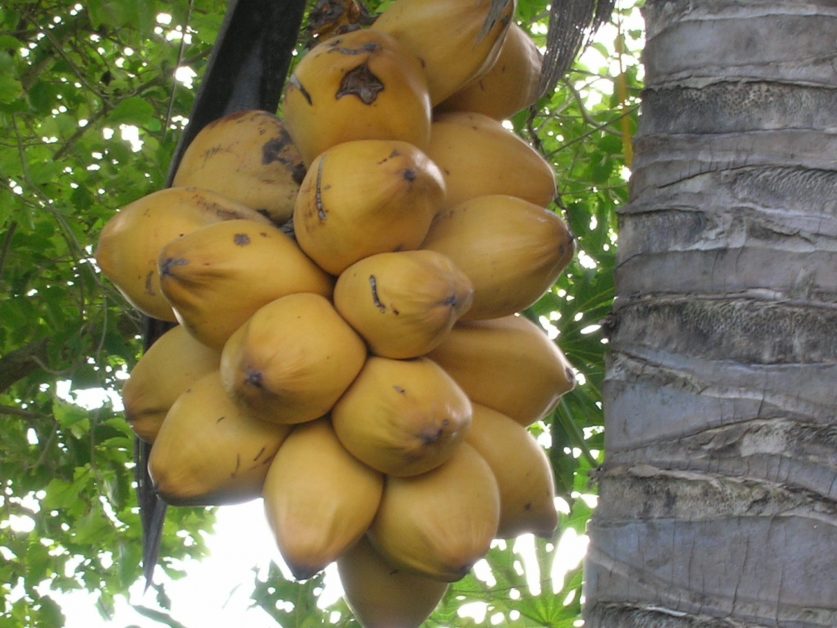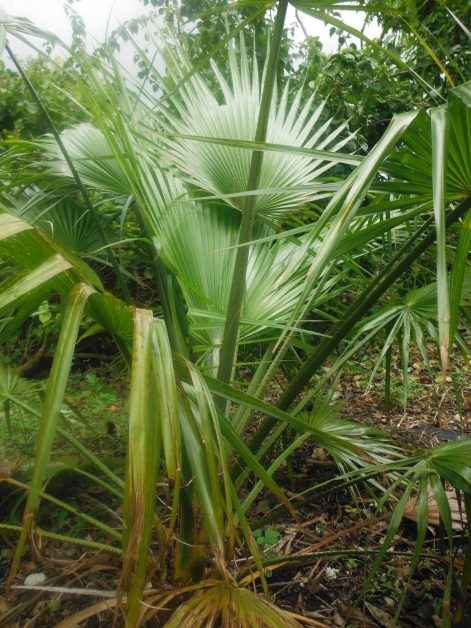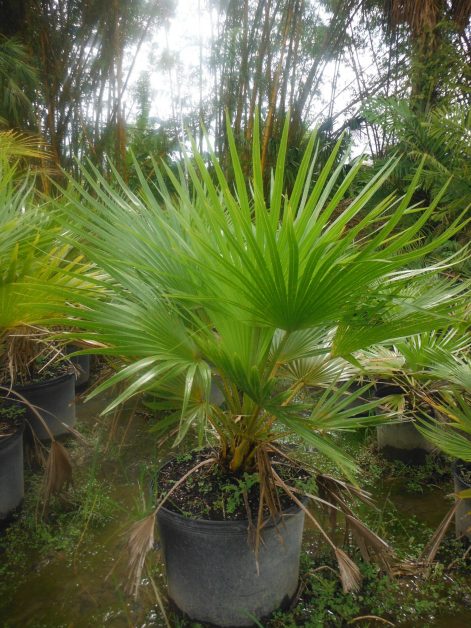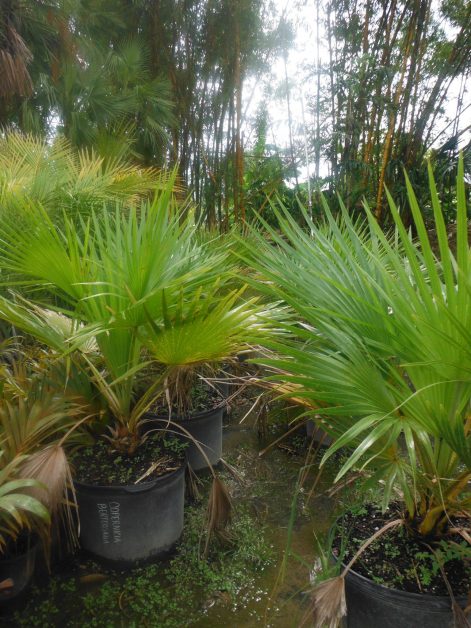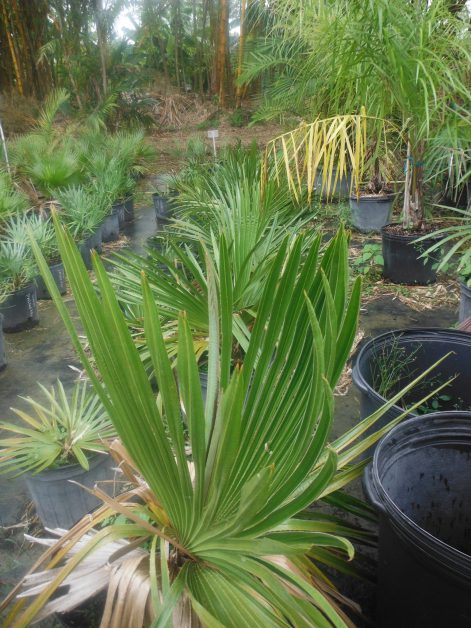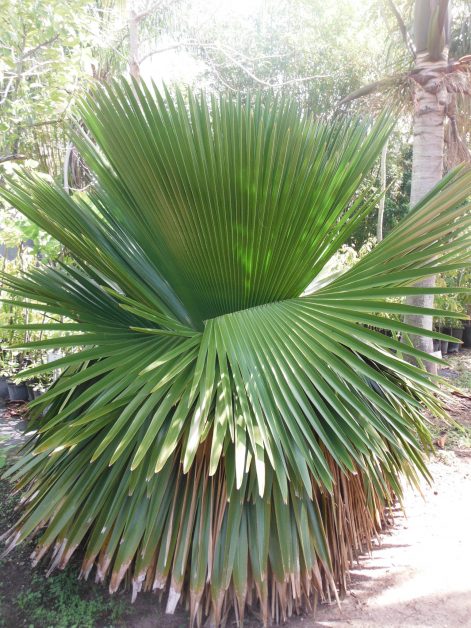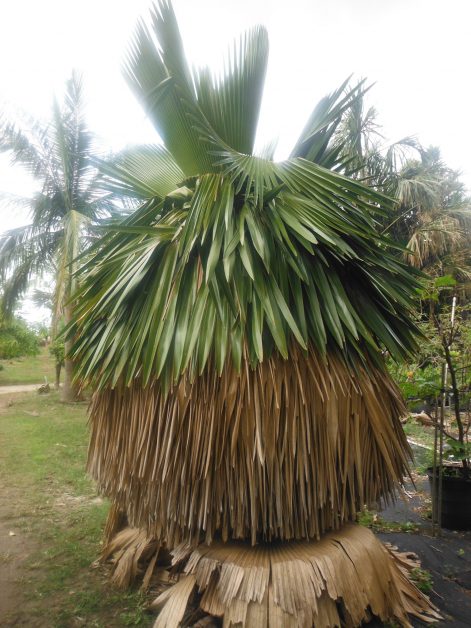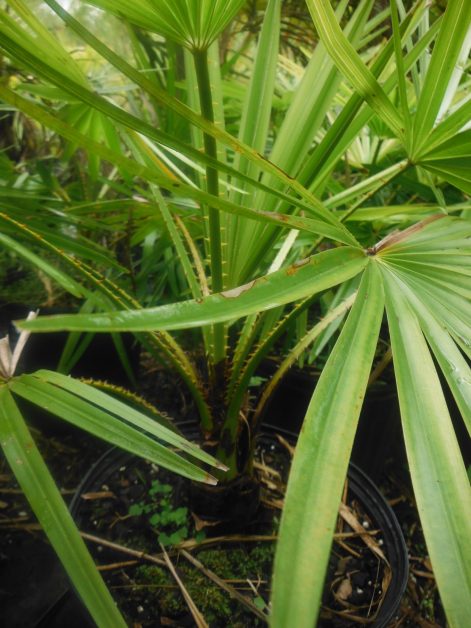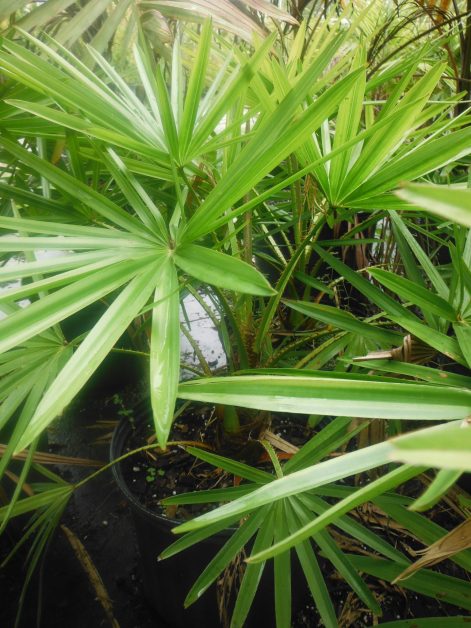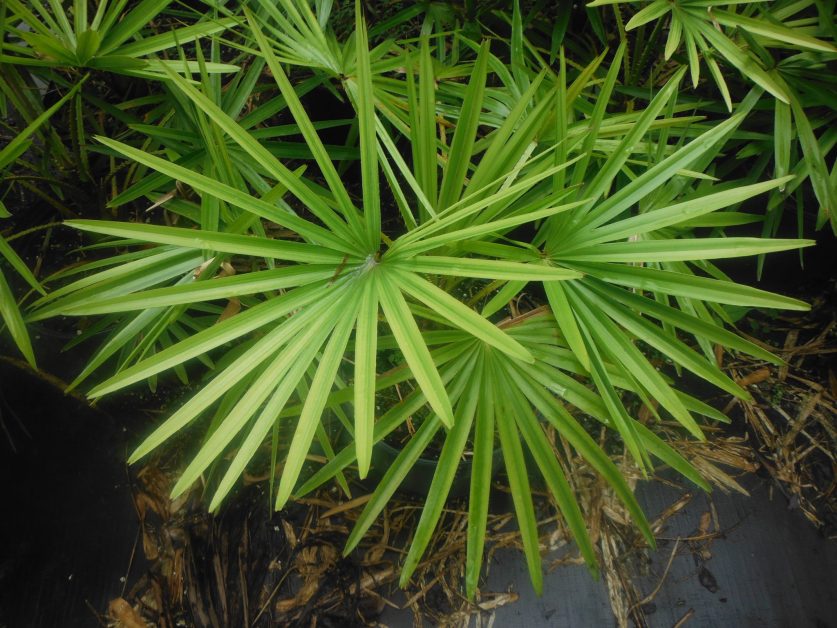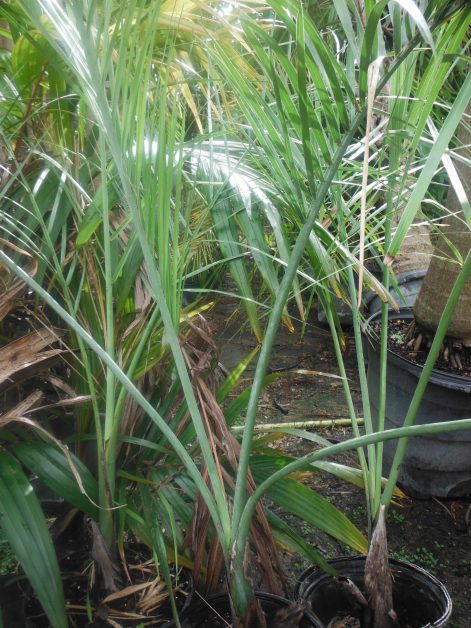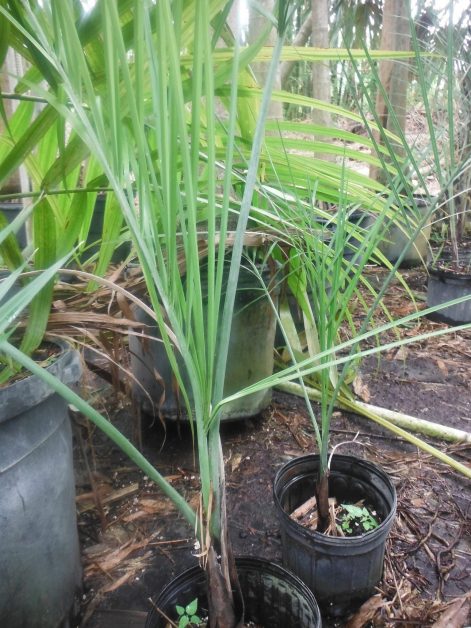Palms for Autumn Planting, Part III
The survey of palm species available at Richard Lyons’ Nursery in 3-gal. containers continues this week:
Cocos nucifera ‘Red Spicata Dwarf’ is a distinctive variety of the Coconut Palm. It bears vibrantly-colored (orange, not truly red) seednuts on spiky infructescences. The contrast between Dwarf and Tall Coconut Palms is manifested in at least two ways that are more predictive than height: Dwarf varieties have narrower trunks, and they begin to flower and fruit earlier. For best results with a ‘Red Spicata,’ fertilize generously during the growing season. Like all coconuts, this variety prefers to be grown in full sun.
- Cocos nucifera ‘Spicata’ (Coconut Palm)
- Cocos nucifera ‘Spicata’ (Coconut Palm)
Copernicia berteroana is perhaps the fastest-growing of the Copernicias, though it slows greatly in Mediterranean climates. Native to open, dry forests of Hispaniola, it reaches 20-33 ft. at maturity. It produces a dense crown of generously-segmented, bright green palmate leaves. The species is not particular about soil, so long as it is well-drained. Though its occurrence in the wild has diminished, it is reported to be widely used as an ornamental plant along streets and in parks in its native land.
- Copernicia berteroana (Yarey Palm)
- Copernicia berteroana (Yarey Palm)
- Copernicia berteroana (Yarey Palm)
Copernicia macroglossa, the Cuban Petticoat Palm, is noted for the skirt of old leaves that persists around its trunk for many years. Hidden under the ‘petticoat’ is a stem just 8 in. or so in diameter. The palm’s distinctive look is owed to its very short leafstems, which cause its large leaves to appear as if they emanate directly from the trunk. Like many species in its genus, C. macroglossa accommodates copious amounts of water very well, but also handles drought easily once established. It reaches 20-25 ft. in southern Florida.
- Copernicia macroglossa (Petticoat Palm)
- Copernicia macroglossa (Petticoat Palm)
- Copernicia macroglossa (Petticoat Palm)
Livistona nitida is native to central Queensland, Australia, where it is generally found near abundant sources of water, such as in the Carnarvon Gorge. Though capable of reaching over 100 ft. in its homeland, L. nitida tops out at about 40 ft. in our region. It features an open crown of numerous palmate leaves with drooping leaf segments. Its petioles are lined with curved, dark red spines. Still relatively uncommon in Florida, it can handle temperatures in the low 20s. Plant it in a sunny location.
- Livistona nitida (Carnarvon Palm)
- Livistona nitida (Carnarvon Palm)
- Livistona nitida (Carnarvon Palm)
Pseudophoenix vinifera is another palm native to dry areas of Hispaniola. Its species name is derived from its use, especially years ago, to make a wine. Its most striking feature is its swollen trunk, ringed by very pronounced leaf scars and coated with a whitish wax. P. vinifera produces abundant, showy scarlet fruit. It should be planted in sunny sites with good drainage. Once established, it is drought-tolerant. A slow grower, it may reach 65 ft. in its native region, but is more likely to mature to around 25 ft. in southern Florida.
- Pseudophoenix vinifera (Cherry Palm)
- Pseudophoenix vinifera (Cherry Palm)
